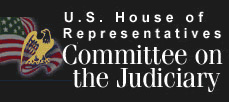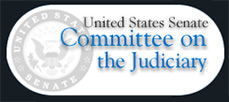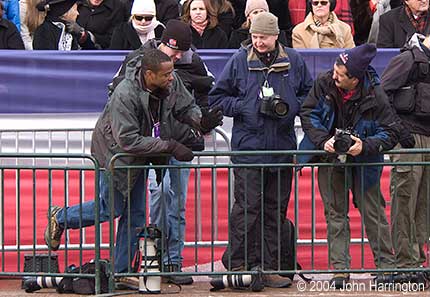Freelancers Are Not Journalists?
 At a time when staff photographers are becoming extinct and being replaced by freelancers, the definition of journalist is on its' way to being gutted by the Congress, seeking to establish a definition of a journalist as such:
At a time when staff photographers are becoming extinct and being replaced by freelancers, the definition of journalist is on its' way to being gutted by the Congress, seeking to establish a definition of a journalist as such:
"The term "covered person" means a person who regularly gathers, prepares, collects, photographs, records, writes, edits, reports, or publishes news or information that concerns local, national, or international events or other matters of public interest for dissemination to the public...and includes a supervisor, employer, parent, subsidiary, or affiliate of such covered person."Since your client isn't your supervisor, all the freelance contracts specifically exclude you from being and employee (and thus they are not your employer) you are not going to be defined as a journalist if this law passes with the House language intact.
What does this mean?
 Well, the bill that does this definition is the federal shield bill that allows you to protect your confidential sources, and it could affect your ability to seek press credentials from local, state, or federal organizations. The Senate version of this bill does not have the same language, and is far more broad:
Well, the bill that does this definition is the federal shield bill that allows you to protect your confidential sources, and it could affect your ability to seek press credentials from local, state, or federal organizations. The Senate version of this bill does not have the same language, and is far more broad:the regular gathering, preparing, collecting, photographing, recording, writing, editing, reporting, or publishing of news or information that concerns local, national, or international events or other matters of public interest for dissemination to the public.The Free Flow of Information Act of 2009 is going to redefine the landscape for freelancers, bloggers, and so on. This is a draconian move that organizations like the National Press Photographers Association, National Writers Union, American Society of Media Photographers, Professional Photographers of America, and, frankly, every other association that has news-gathering members, should be opposing.
Hopefully the various trade groups who will have their memberships impacted will be able to affect the House language before it gets voted on. If not, then hopefully the conference committee will rectify the differences in favor of the Senate language on this particular issue.
More information:
- House Bill - Free Flow of Information Act of 2009
- Senate Bill - Free Flow of Information Act of 2009
- Citizen Media Law Project - Federal Shield Bills Offer Rival Takes On Who's A Journalist; Bloggers Could Be Left Unprotected
- Reporters Committee for Freedome of the Press - Shield law re-introduced in House
Please post your comments by clicking the link below. If you've got questions, please pose them in our Photo Business Forum Flickr Group Discussion Threads.


